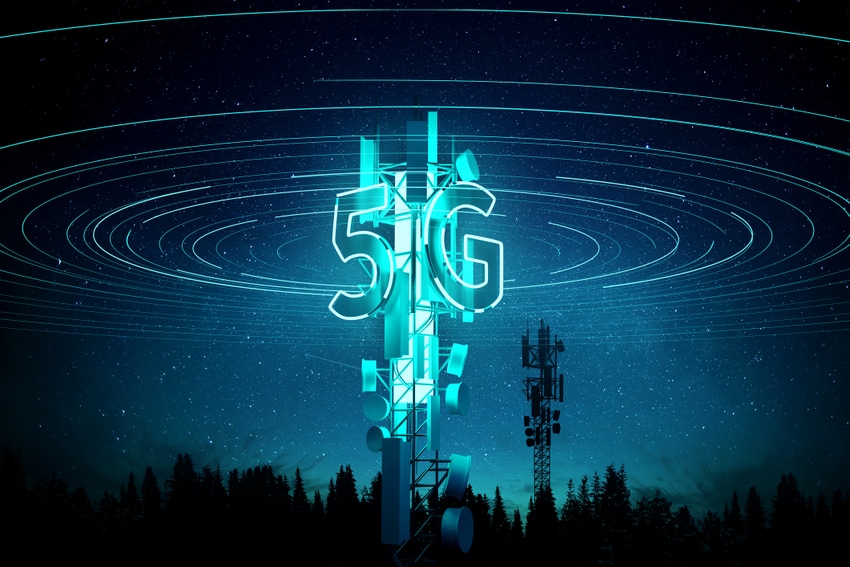Telefónica, Ericsson and Qualcomm to deploy 5G ‘first commercial’ mmWave network at MWC
Operator Telefónica, alongside kit vendor Ericsson and chip firm Qualcomm will set up a 5G mmWave network in Hall 3 of MWC later this month, which they are claiming as a first.
February 17, 2023

Operator Telefónica, alongside kit vendor Ericsson and chip firm Qualcomm will set up a 5G mmWave network in Hall 3 of MWC later this month, which they are claiming as a first.
The network will use the 26GHz spectrum bandwidth obtained by Telefónica in the recent Spanish auction, and we’re told it will be ‘the first commercial mobile 5G millimeter (mmWave) network in Spain’. It could be questioned whether what is presumably a temporary installation at a trade show constitutes as the first ‘commercial’ network, but perhaps that’s splitting hairs.
The use of 5G mmWave spectrum is touted as a better way to deliver high speed 5G connectivity in crowded areas. It’s different from ‘normal’ 5G in that it uses frequency bands of 26GHz and beyond. It’s sometimes described as having a ‘bigger pipe’ because there is more available spectrum, but the downside is the range and propagation characteristics deteriorate beyond 2-3 GHz. Sports stadiums, where congestion means connectivity isn’t great even on 5G, is often thrown out as a good application of the tech.
Or as the release puts it: ‘The use of 5G mmWave spectrum is the optimum way to achieve high speeds and high capacity, and to deliver the best 5G experience in crowded areas. Especially interesting is the role of 5G mmWave in the area of Fixed Wireless Access, digitalization, Industry 4.0, and connected vehicles, providing extremely high-performance coverage and enabling a completely new range of use cases to be explored.’
It also says mmWave will ‘enhance immersive experiences such as VR and AR and provide industry and manufacturing companies with the critical communications they need to go fully wireless and become more competitive, by adopting technologies such as artificial intelligence and automation in a fully flexible environment.’
The network uses Ericsson’s mmWave radio AIR 5322 and high-capacity RAN Processor 6651 to enable, and the radio access network equipment is powered by Ericsson Silicon chipset. Qualcomm’s 5G mmWave device bar will showcase 5G mmWave devices loaded with by Snapdragon including smartphones, PCs, CPEs, hotspots, and others.
“This first commercial deployment of 5G mmWave services we are launching together with Ericsson and Qualcomm, along with the massive spectrum that Telefónica has obtained in the last auction, is the last milestone in a series of 5G long term projects that Telefónica has been developing in collaboration with enterprises and institutions in the last 3 years, and it goes a long way in showing the commitment that Telefónica has in the development and leadership of a strong 5G ecosystem that will be a key factor in bringing compelling services for both the public and private sectors,” said Gerardo Rovira, director of Radio Access Telefónica Spain.
Somaya El-Marrackchi, Head of Networks, Ericsson Iberia, added: “Our collaboration with Telefónica and Qualcomm to achieve this 5G mmWave technological leap in Spain will dramatically change the experience of mobile connectivity for consumers and enterprises, making it faster, more accessible and more reliable. Millimeter band opens a new paradigm in the deployment of 5G technology, that will provide operators a powerful tool to complement existing network deployment strategy to increase performance and capacity with different needs.”
As we’ve pointed out before, the problem with all this stuff is marketing and monetisation. Are Industry 4.0, connected vehicles, VR and AR all really new use cases specifically for 5G mmWave? Or are they the same use cases that have been used to sell vanilla 5G for years now?
It’s not that these things don’t represent technological progress, it’s that there’s a problem when it comes to talking about every incremental advance as a civilisation-altering step change, and using largely the same benefits to back that up which have already been used. Consumers will have to own newer phones that are built with the ability to access mmWave networks – a standard 5G phone won’t cut it. And that seems like a tricky thing to market at this stage given the years of hype around 5G.
Regardless, it looks like mmWave may become a key theme of MWC in a week or so, and so it’s application and how it is distinct from what we already have is something that will no doubt be explored further within the halls of La Fira.
Get the latest news straight to your inbox. Register for the Telecoms.com newsletter here.
About the Author(s)
You May Also Like








.png?width=300&auto=webp&quality=80&disable=upscale)


_1.jpg?width=300&auto=webp&quality=80&disable=upscale)


.png?width=800&auto=webp&quality=80&disable=upscale)